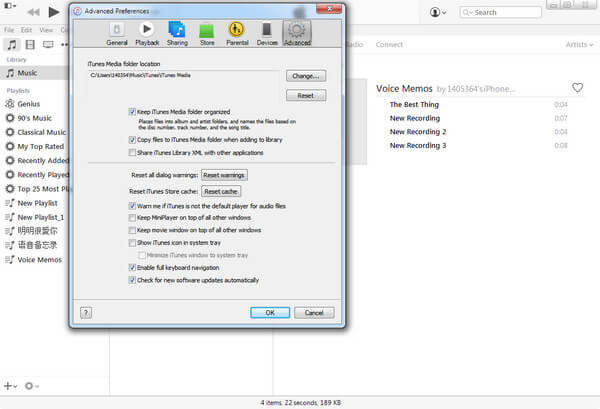Update: Since the release of macOS Catalina, iTunes is no longer available on the Mac. The process below is still applicable to iTunes on Windows. On the Mac, you can manually save an XML file by choosing File > Library > Export Library. But you can no longer do this automatically.
Rename the files to 'iTunes Music Library' 'iTunes Music Library.xml' 'iTunes Library Music Extras.itdb' 'iTunes Music Library Genius.itdb' 9. Close the finder window. Hold down the 'option' key on your keyboard and click on iTunes - this will open the 'Choose iTunes Library' window 11. Click on the 'Choose Library' button. Click the Go on top menu, and select Go to Folder. Or directly press Command + Shift + G to open the dialog where you can access a folder on Mac OS X with location. Enter the default iTunes backup file location: /Library/Application Support/MobileSync/Backup/. Navigate to /Music on the dialog showing the source Mac's file system and drag the entire iTunes folder to the equivalent location on the destination Mac. Depending on the size of the library, the. Ah, alt is the alternative label for option on a Mac. 😉 Even more amazing is that you cannot simply double-click any library file and have iTunes open that library. Since this is the default location for the iTunes library, the program should simply adopt the new library and its media; however, if it does not, or if you have placed the copied library in a.

Note: Since iTunes 12.2, iTunes no longer creates the iTunes Library.xml file, which I mention below, by default. It’s a good idea to tell iTunes to do this, so you can recover your library from that file if necessary. To do this, go to iTunes > Preferences > Advanced, and check Share iTunes Library XML with other applications.
Every now and then, an iTunes Library has problems. You may have tracks or songs that disappear in the library, but that are still in your iTunes Media folder. Or playlists may change or disappear. Or there may be other, inexplicable problems.
Change Itunes Library File Location Mac Os
One way to try and fix these issues is to rebuild your iTunes library. I’ve done this from time to time, and it can solve some issues, and has even fixed problems with Genius.
It’s a simple process, but one that may take a while if you have a lot of content in your library. Here’s how you do it.
- Back up your iTunes Media folder. While rebuilding the library doesn’t affect your media files, it’s best to be safe.
- Quit iTunes, then find your iTunes folder. If you’re on a Mac, it’ll be in the Music folder in your home folder (that’s the one with the house icon and your user name). On Windows, it can be in different locations according to the version of Windows you use:
- Windows XP: Documents and Settings[your username]My DocumentsMy Music
- Windows Vista: Users[your username]Music
- Windows 7 or later: Users[your username]My Music
The two files you’ll be using are iTunes Library.itl (or, perhaps, just iTunes Library) and iTunes Library.xml.)
- Make copies of all these files; again, just in case.
Move the iTunes Library.xml or iTunes Music Library.xml file to your Desktop or to another folder. You’ll be using this file to rebuild the library.
Delete the iTunes Library or iTunes Library.itl file by moving it to the Trash or Recycle Bin.
Launch iTunes, and choose File > Library > Import Playlist. Navigate to the iTunes Library.xml file you moved earlier, and click Choose (Mac) or Open (Windows).
iTunes will now examine the XML file, finding all your tracks and playlists, and add them to your library. This will create a new iTunes Library.itl file. If you have a lot of content in your iTunes library, this will take a while. The last time I did it with a library of about 70,000 tracks, it took well over an hour, so be patient.
If for any reason it doesn’t, you can always quit iTunes, delete the newly-created iTunes Library.itl file, and replace it with the one you backed up.
Open Itunes Library File
One thing you’ll notice is that all the view settings you applied have changed. You’ll have to go back and reset them the way you want for each playlist. (Choose View > Show View Options to tweak these settings.) But the new library should contain all your media, and all your playlists. Also, the Date Added for all your iTunes content will be the date on which you rebuild the library.
